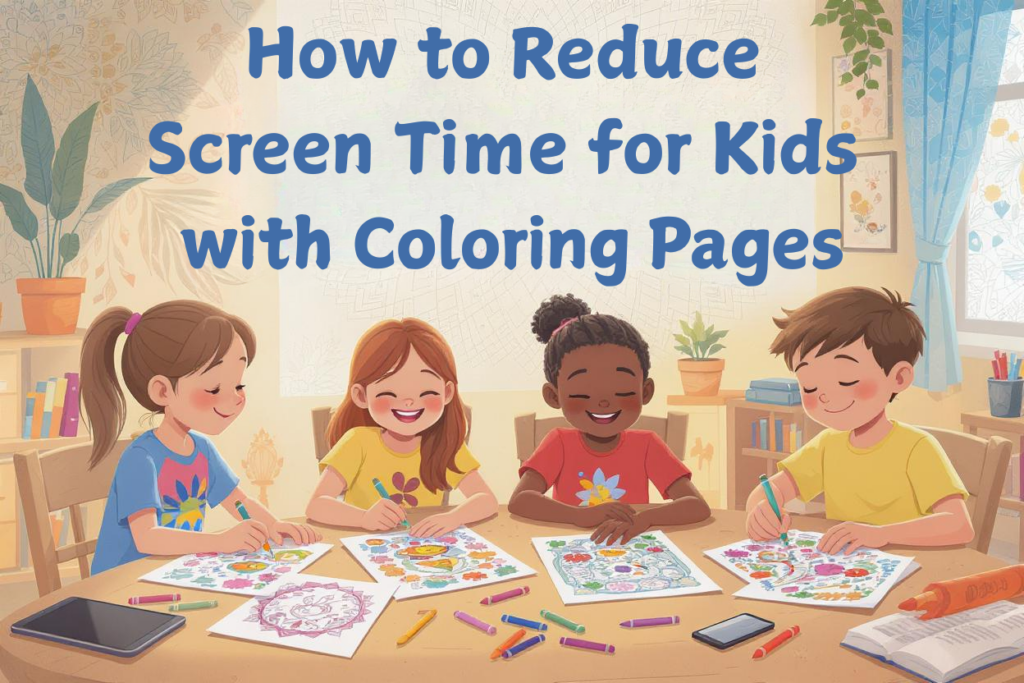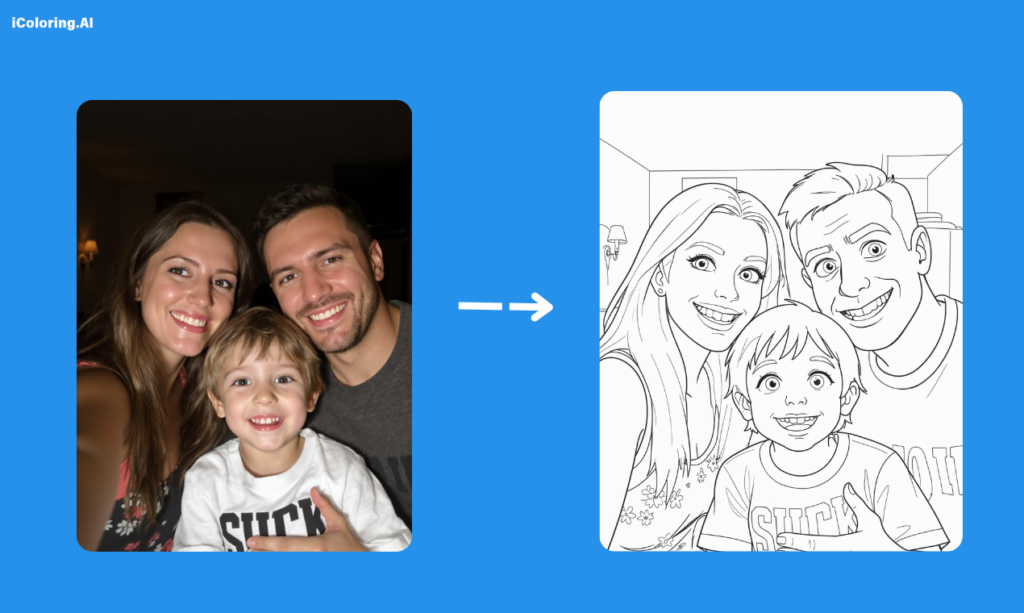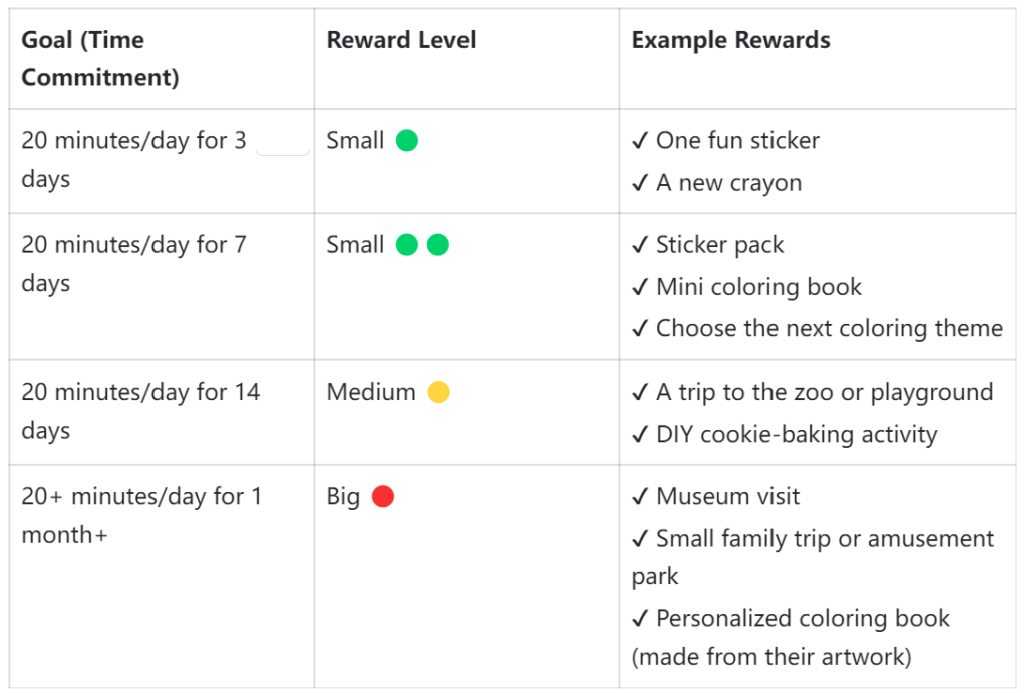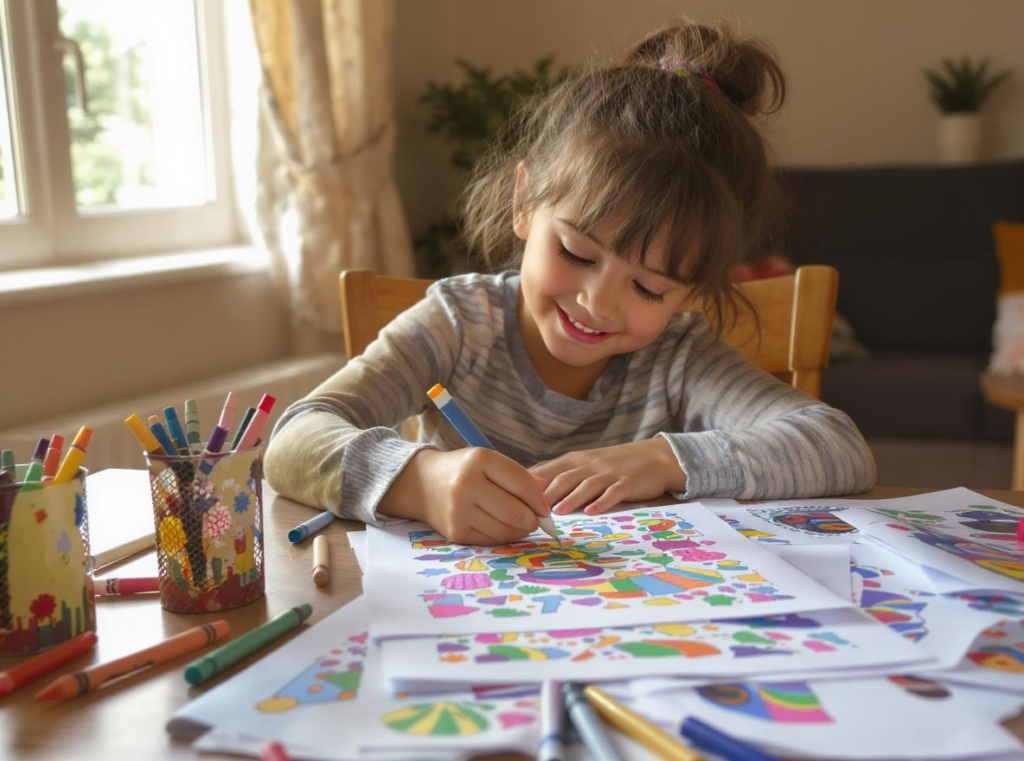
Are you finding it difficult to keep your children off screens? With numerous smartphones, tablets, TVs, and gaming consoles, finding some creative, engaging, screen-free, and exciting alternatives can be quite overwhelming in today's digital world. Coloring pages are a simplistic, cheap, and creative way to cut down on screen time while fostering your child's growth and imagination. This guide will explore why coloring pages are such a very effective tool, and will share useful strategies for families of all types.
Table of Content
Why Learning How to Reduce Screen Time is Important
Learning how to handle screen time begins with knowing its impact on your child's development.
Excessive screen time in early childhood is linked to cognitive delays. A study in the International Journal of Academic Medicine and Pharmacy found children under five with over two hours of daily screen time are nearly three times more likely to experience developmental delays in problem-solving and communication.
Engaging in passive screen use, such as video watching, is more detrimental than screen use that is interactive. Research from Children and Screens suggests that excessive screen time detracts from attention, memory, language and executive functioning because real-world interaction is critical to brain development.
In addition to cognitive issues, excessive screen time may cause:
- Disruption of sleep and sleep quality
- Decreased physical activity
- Difficulties with social interaction and emotional management
- Increased risk of attention problems

The Science Behind Coloring Pages as a Screen Time Alternative
When parents ask questions like how to reduce screen time, they usually do not focus on one of the best tools available to them: coloring pages. Let me explain, coloring pages can work wonders when trying to manage your family's screen time.
Brain Gains
Coloring is much more than a fun activity! There are many benefits for the brain. Studies have shown that coloring stimulates different areas of the brain including the prefrontal cortex (this is involved in decision-making), the cerebellum (this is involved in motor control), and the limbic system (this is involved with emotion and memory). When areas of the brain are stimulated, these multiple connections can strengthen the brain and produce growth. Amazing right? Even better, coloring for 20 minutes can decrease cortisol levels (a stress hormone) which helps increase dopamine levels, thus helping to improve mood and relaxation.
Motor Skills and Learning
Coloring is important for children's development of fine motor skills. Staying in the lines takes concentration, hand-eye coordination, and great finger dexterity which are all important for writing and completing other daily activities. Studies show that children who are engaged in hands-on activities like coloring show more motor control and improved length of attention than their peers who are on screens.
How to Reduce Screen Time with Coloring Pages
Here are practical strategies to incorporate coloring pages into your child’s routine to effectively address how to reduce screen time:
Choose Right Coloring Pages for Kids
Pick Themes Your Child Loves
Interest is the greatest motivator. Make coloring time irresistible for your child by choosing things they are interested in like animals, superheroes, or magical scenes. Before you start coloring you might want to talk with your child about what they would like to color about. This simple conversation will ignite their creativity and give them a sense of control.
Begin With Easy-To-Color Images
If your child is a novice when it comes to coloring pages, start with images that have large, simple areas and bold outlines. Select coloring pages with fun and familiar subject matter, such as fruits, furniture, cars, or cartoon-style animals. Simplistic coloring pages are less overwhelming for young children and allow them to build some self-confidence when coloring. They also provide the opportunity to introduce, reinforce and practice everyday vocabulary in a fun way.
Establish a Coloring Corner
Choose a little spot at home for your coloring activities. Fill it with coloring or printable coloring pages, crayons, markers, or colored pencils. When children have an inviting space dedicated to their coloring activities, they will gravitate towards the art supplies instead of screens.
Pro Tip: Consider adding fun art supplies like glitter pens or stickers for more excitement.
Make It a Family Activity
Instead of everyone scrolling on their own, try to bring everyone around the table to color together. You can even turn your favorite family photos into coloring pages using AI tools. While everyone colors, take the chance to share the stories behind the pictures. It’s a fun and meaningful way to connect—without any screens involved.
Pro Tip: how to turn photos into coloring pages with AI
- Click"Image to Coloring Pages"
- Upload your family photo
- Select one of the styles(Default,Cartoon,Snoopy,Sketch)
- Click "Generate" and you can get your family photo coloring pages in seconds

Building Sustainable Routines
Ultimately, managing screen time effectively is about developing sustainable routines:
- Replace screen time: Change up regular screen time (e.g., after meals or before bed) with a coloring time.
- Establish reliable schedules: Create "color before screen" expectations that kids can actively anticipate to ensure they are being creative off of screens.
- Stage transitions: For heavy screen-using kids, begin replacing screen time with longer, incremental coloring time while simultaneously decreasing time on the device, to ensure sustainability.
Create a Reward System
If you want to motivate your child to keep coloring, then provide them with simple, meaningful rewards. For example, if they color for 20 minutes a day over the course of a week, maybe they can receive something special—a fun sticker, a new pack of crayons, or some little things they want. If they reached a larger milestone, they could earn a trip to the zoo or an amusement park nearby. These screen-free rewards reinforce health, and provide something fun that they can look forward to.
You can have them save their finished artwork and create a mini coloring book for a keepsake. Giving them praise for their progress and hanging their artwork on the wall will only help instill confidence and help them stay motivated with their creativity.

Note:Rewards can be tailored to your child's specific interests. Where possible, choose any screen free option and cultivate healthy habits.
Adapt for Reluctant or Special Needs Kids
If your child does not enjoy coloring, or has special needs:
- For Reluctant Kids: Consider pairing coloring with music or using pages on their interests (ex. sports, video games). Try starting with five minutes of coloring.
- For Special Needs: If the child has sensory issues, consider using textured paper, or thicker crayons. If they have attention issues, try using a timer to set short time sessions.
- For Older Kids: Consider complementary or collaborative projects like murals, or combining coloring with craft activities like origami.
Take Coloring Beyond the Page
To keep coloring exciting and fresh, consider additional options:
- Themed Projects: Create a 'coloring storybook.' Your child will color the pages, then write a story on it.
- Outdoor Coloring: Use sidewalk chalk on the driveway/patio to get kids moving while they color.
- Community Events: Join the local library to see if they host any coloring events/activities. Libraries or community centers offer great opportunities for kids to take part in social engagement

How to Get Free Coloring Pages
Online Free Coloring Page Platforms
Dedicated Coloring Websites:
Several websites specialize in providing free printable coloring pages. Look for sites that offer:
- High-quality images with clear, bold lines
- Age-appropriate content categories
- Easy-to-print PDF formats
- Regular updates with new designs
Search Engine Resources:
When searching for free coloring pages, use specific terms like "free printable coloring pages [theme]" to find exactly what your child enjoys. Always verify that images are free for personal use.
Creating Your Own Free Coloring Pages with AI
Tired of scrolling through endless websites looking for the perfect coloring page? Why not make your own pages? With free tools like iColoring AI, ColorBliss, Mimi Panda and others, you can generate your own custom pages in seconds. Simply type a prompt into the "Text to Coloring Page" tool like "a unicorn in a magical forest" to get a one-of-a-kind, printable coloring page! It's a fun, creative, and screen-free way to keep your kids entertained!
FAQ

What are the recommended limits on screen time for kids?
Under 2 years — No screen time other than video chatting with the family or friends.
Ages 2-5 -- Limit to one hour a day, to very young children preferably co-viewing with a parent or sibling and/or encouraging interaction during the viewing.
Age 5-17 -- Generally, no more than two hours a day that is not homework.
When should I start using coloring pages?
Kids can start at as young as 18 months with jumbo crayons and simple images!
How often should I encourage coloring to help with screen time?
Aim for 15–30 minutes daily, replacing high-screen periods like after school. Start small and increase gradually.
What if my child will not color?
Consider trying interactive coloring sheets or character-themed pages. You may also try simple short-term projects (with some sort of incentive), or transition from coloring onto another tactile activity, such as a puzzle or some form of 3-D activity, etc.
When can kids start coloring?
Children as young as 18 months can use jumbo crayons and simple shapes. Adjust complexity by age.
Conclusion
Learning how to reduce screen time for kids doesn’t have to be expensive or complicated. Coloring page offer a simple and timeless way to inspire creativity, support learning and promote social emotional well-being. By bringing coloring into your everyday life, providing more variety using themes and objects when coloring with your child, and modeling screen free time, parents can help kids develop healthier habits for life.
Why not start now? Let your kids enjoy the fun of coloring-It is a screen free, creative time together. If you share their coloring pages on social media, please @us on X, we would love to see their creations!








